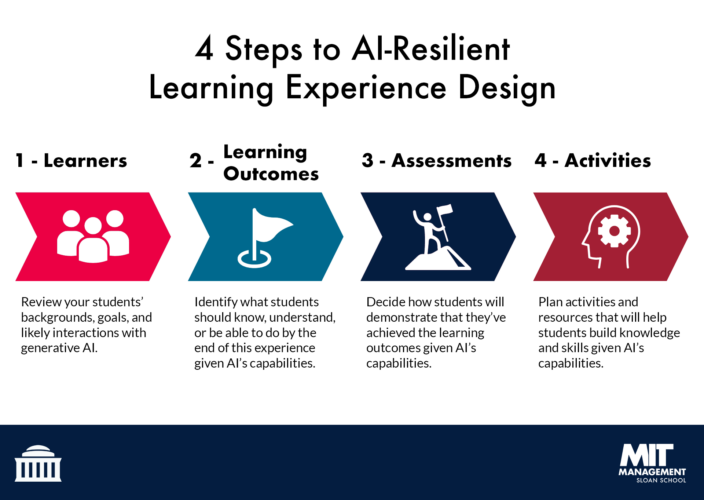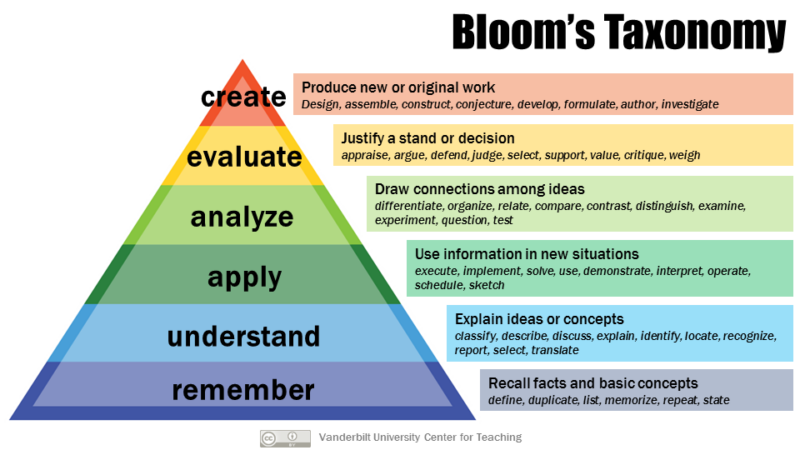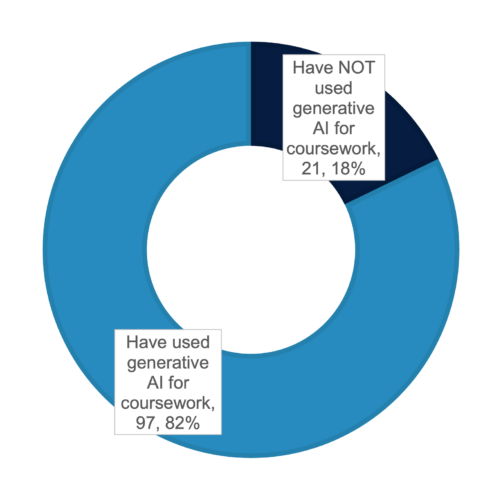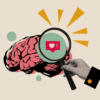SKIP AHEAD TO
At a Glance
So, your students are using AI tools like ChatGPT. Now what?
This guide offers a practical framework for designing AI-resilient learning experiences. We’ll walk through four immediate steps that you can take to support your students’ learning in the age of AI.
These are the assumptions behind our approach:
- Some of your students are using generative AI for coursework. In a Fall 2023 survey at MIT Sloan, 82% of student respondents said they had used generative AI for coursework that term. Other research suggests that students may use these tools regardless of your policies (Shaw et al., 2023).
- It’s almost impossible to police students’ use of generative AI. Since AI detectors don’t work, the only way to enforce a generative AI ban is to make students complete deliverables in person without devices. That approach can disadvantage otherwise high-performing students who struggle to write by hand or under tight time constraints.
- Generative AI use can help or hurt students’ learning. While some students use generative AI to avoid learning, others use those same tools to support their learning. MIT Sloan students report using generative AI to facilitate brainstorming, create visual aids, and translate course content.
- Students need to be able to recognize when AI gets it wrong. That means they need to build domain knowledge. It also means they’ll need to develop an understanding of how generative AI tools work, where they might trip up, and why they might not be useful for solving certain kinds of problems.
- You can design AI-resilient learning experiences. By thoughtfully planning learning experiences that take modern technologies into account, you can maximize your students’ learning in our generative AI-enabled world.






